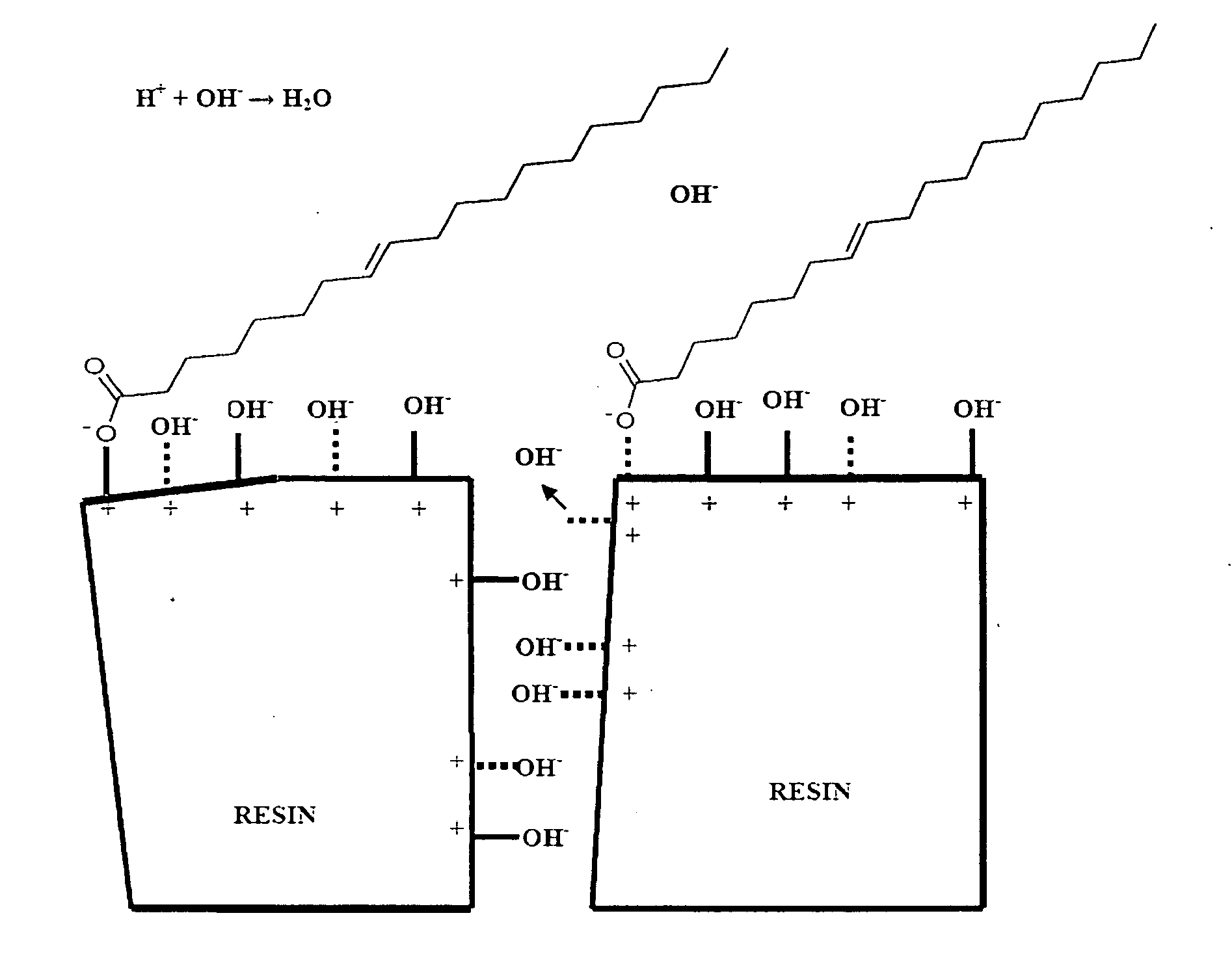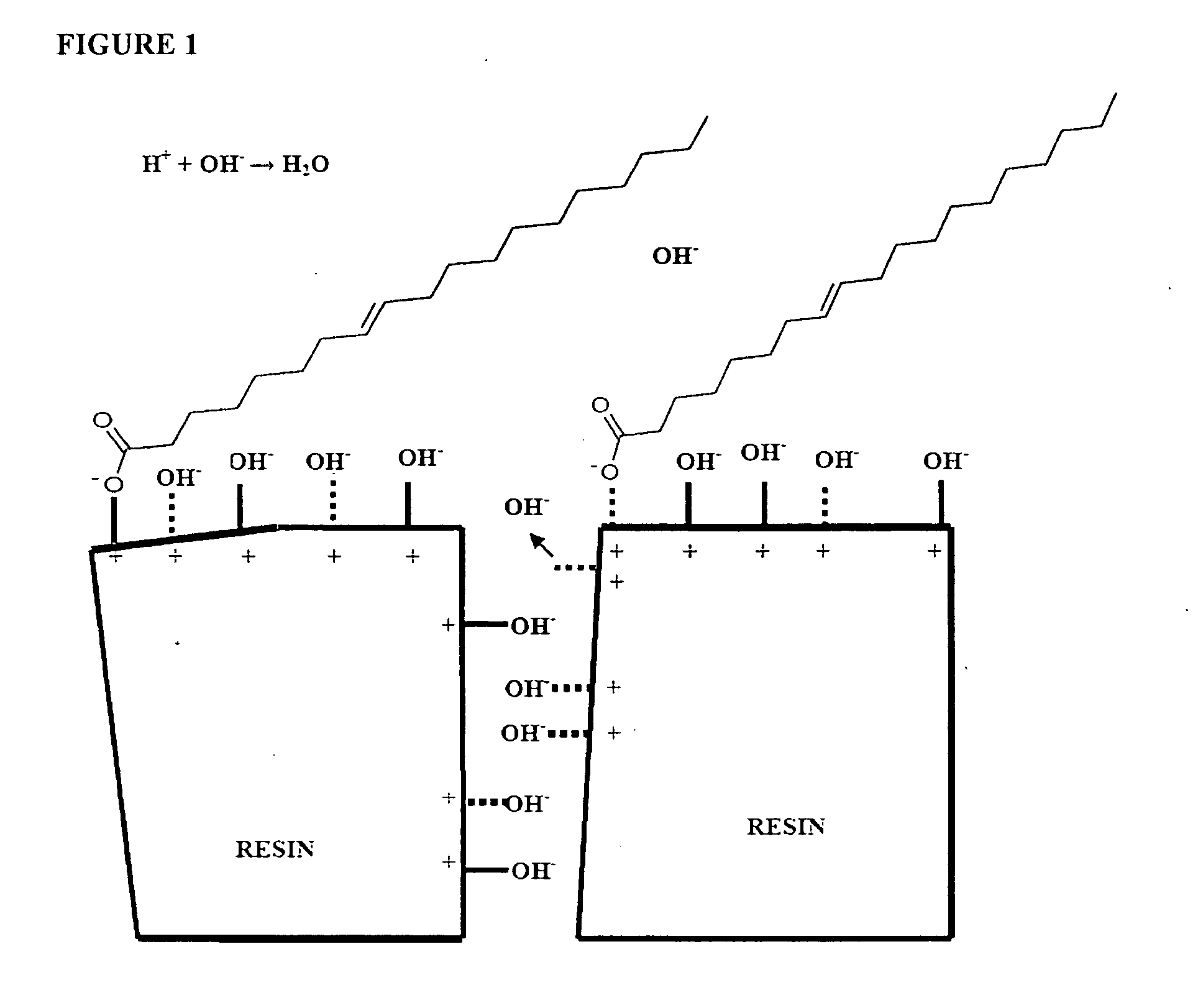Combined homogeneous and heterogeneous catalytic transesterification process for biodiesel production
a technology of biodiesel and catalytic transesterification process, which is applied in the preparation of carboxylic compounds, fatty acid chemical modifications, fuels, etc., can solve the problems of reducing the yield of ester (biodiesel), and affecting the production efficiency of biodiesel
- Summary
- Abstract
- Description
- Claims
- Application Information
AI Technical Summary
Benefits of technology
Problems solved by technology
Method used
Image
Examples
examples
Reagents
[0047]Anhydrous methyl alcohol (about 99.8%) and sodium hydroxide (about 99%) were obtained from Mallinckrodt Chemicals (Phillipsburg, N.J.). Commercial, edible grade soybean oil (total acid number was about 0.046 mg KOH / g) was obtained from a grocery store (COSTCO) and evacuated in a vacuum to remove water and gases dissolved in the oil phase. Strong basic anion exchange resins were purchased from Sigma-Aldrich (St. Louis, Mo.). Marathon A and Monosphere 550A were purchased in hydroxide form, and the other resins were in chloride form. Table 1 summarizes the physical properties and the exchange capacity of the resins studied. The gel type resins (DOWEX 1×2, 1×4) having different cross-linking degree and different particle size were also purchased from Sigma-Aldrich.
TABLE 1Properties of Resins.Cross-ExchangelinkingCapacityResinsMatrixParticle size(%)(meq / ml)Marathon AGel610 ± 50μm1.2MonosphereGel590 ± 50μm—1.1550 AMarathonMacroporous640 ± 50μm—1.0MSAAmberite 900Macroporous30...
PUM
| Property | Measurement | Unit |
|---|---|---|
| pore diameters | aaaaa | aaaaa |
| particle size | aaaaa | aaaaa |
| molar ratio | aaaaa | aaaaa |
Abstract
Description
Claims
Application Information
 Login to View More
Login to View More - R&D
- Intellectual Property
- Life Sciences
- Materials
- Tech Scout
- Unparalleled Data Quality
- Higher Quality Content
- 60% Fewer Hallucinations
Browse by: Latest US Patents, China's latest patents, Technical Efficacy Thesaurus, Application Domain, Technology Topic, Popular Technical Reports.
© 2025 PatSnap. All rights reserved.Legal|Privacy policy|Modern Slavery Act Transparency Statement|Sitemap|About US| Contact US: help@patsnap.com



